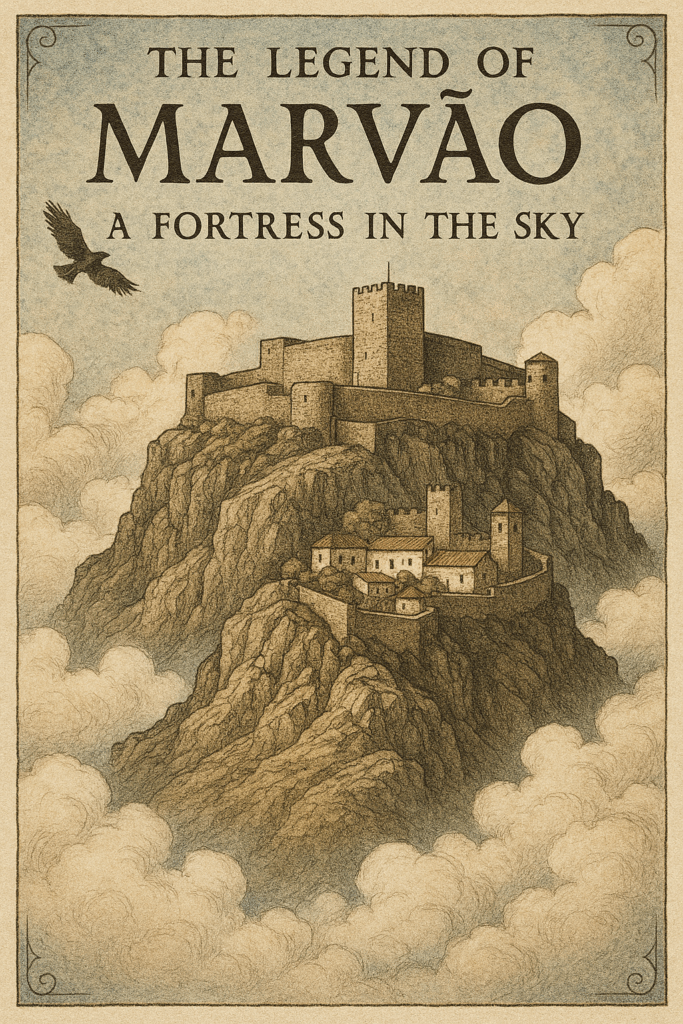
A Sentinel Above the Clouds
High atop the quartzite cliffs of the Serra de São Mamede, Marvão stands as if carved from the very bedrock of history. Dawn mists swirl around its ramparts, lending the fortress an ethereal glow that seems more dream than reality. Travelers who glimpse its towers from the valley floor speak of a citadel suspended between earth and heaven—an ancient prophecy made manifest. This is the story of how a rebel’s refuge became a timeless stronghold.
The Rebel and the Ruins
In the late 9th century, the Iberian Peninsula was a shifting tapestry of empires, faiths, and restless warriors. Ibn Maruán, a Sufi knight with a reputation for both piety and fierce independence, rejected the Emir of Córdoba’s authority. He sought a place where he could live by his own code.
He discovered the abandoned Roman city of Ammaia, its crumbling walls half-swallowed by heather and thyme. From this vantage, he could survey the River Sever as it wound unpredictably from south to north—a fitting metaphor for his own spirit. Among the fallen columns, he envisioned a fortress that would outlast empires.
Forging the Skyward Citadel
Transforming ruins into an impregnable sanctuary demanded ingenuity, devotion, and more than a touch of daring.
- Foundations hewn from solid quartzite, their seams sealed with a mortar mixed from crushed walnuts and mountain spring water.
- A single, narrow gate flanked by arrow slits, designed so that even a small garrison could hold back a large army.
- Hidden cisterns bored deep into the rock, ensuring fresh water even under siege.
- A prayer hall at the heart of the keep, its horseshoe arches evoking the grandeur of al-Andalus and doubling as an acoustic amplifier for dawn invocations.
By candlelight and sweat, Ibn Maruán’s vision materialized—a fortress that seemed to rise from the clouds themselves.
The Chessboard of Kingdoms
Marvão’s perfection as a stronghold made it a coveted prize for centuries:
- In the 12th century, Christian knights under Afonso I launched a daring assault, briefly claiming the fortress before Moorish forces under Abu Zakariya reclaimed it.
- Border skirmishes ebbed and flowed for decades, each side adding bulwarks or undermining foundations in secret raids.
- King Denis of Portugal, recognizing Marvão’s strategic value, undertook a grand reconstruction in 1299—replacing round towers with angular bastions designed to deflect cannon shots.
Every meddling monarch left a stone or story behind, turning Marvão into a layered testament to medieval warfare and diplomacy.
A Monarch’s Vision Realized
King Denis’s refurbishment marked Marvão’s transformation from a rebel’s hideout into a national strongpoint. He:
- Reinforced the curtain walls with thicker parapets and new battlements.
- Carved gunports for early artillery, anticipating the changing face of siegecraft.
- Commissioned a chapel within the inner bailey, consecrating the fortress under Saint Michael’s watchful gaze.
Under his reign, Marvão shifted from frontier fortress to symbol of Portugal’s resolve—its silhouette etched against the sky as both shield and beacon.
Layers of Time Underfoot
Today, every step through Marvão’s narrow alleys uncovers another era:
- Fragments of Roman roadways, half-buried beneath flowering heather.
- Moorish arch motifs hidden within later medieval facades.
- 15th-century charters tucked into stone niches, recording grazing rights and local taxes.
- Hand-painted azulejo panels in the pousada’s chapel, where Christian and Moorish artisans once collaborated.
This mille-feuille of history invites curiosity: who first trod these flagstones, and what did they whisper as they passed?
Walking Through Living History
A visit to Marvão today is an intimate dialogue between past and present:
- Morning light transforms granite into golden honey as you ascend the main gate.
- Midday sun warms the whitewashed houses draped in geraniums along winding lanes.
- Afternoon brings panoramic views over cork-oak forests and olive groves stretching into Spain.
- As dusk falls, lanterns ignite in windows—and the fortress, bathed in amber, seems to dream aloud.
Artisan shops in former guardrooms offer cork crafts and medronho brandy, while village cafés serve caldeirada with border-blend wines. Every moment feels like stepping into a living chronicle.
Epilogue: Whispers on the Wind
Legend says that on still nights, the wind carries the echo of Ibn Maruán’s prayers from the hidden prayer hall. Whether myth or memory, it reminds visitors that Marvão is more than stone and strategy. It is a dream realized by a wanderer, a chess piece in royal contests, and now, a beacon for those who seek to touch history. Have you ever felt the pull of a place where time itself seems to pause? Marvão awaits your footsteps—and your story.

